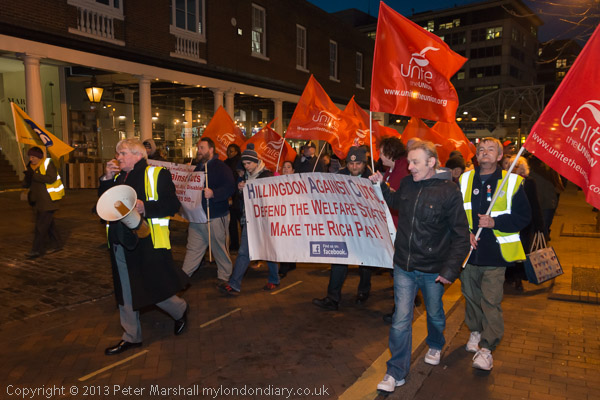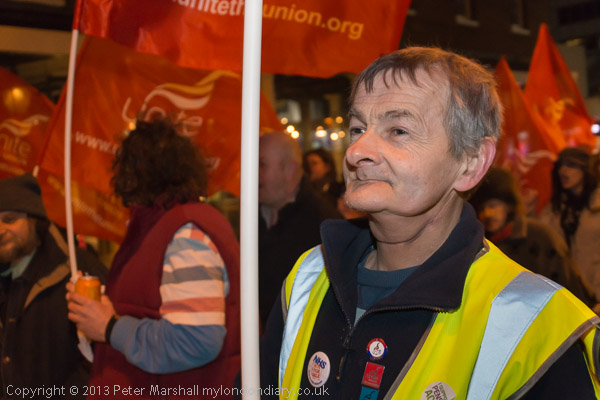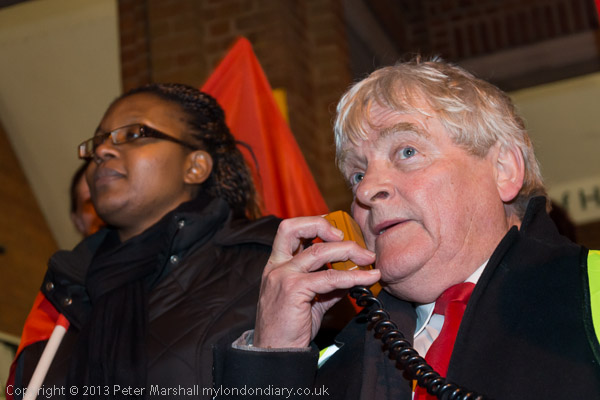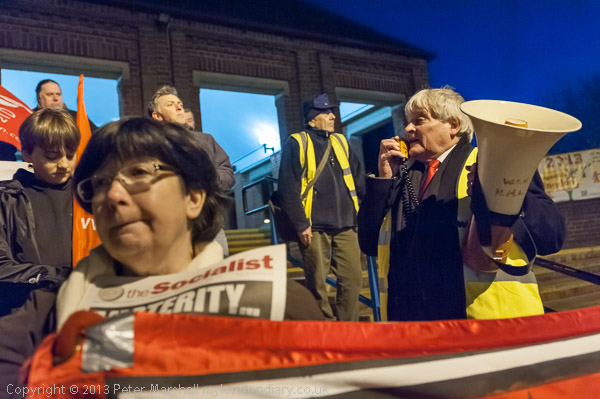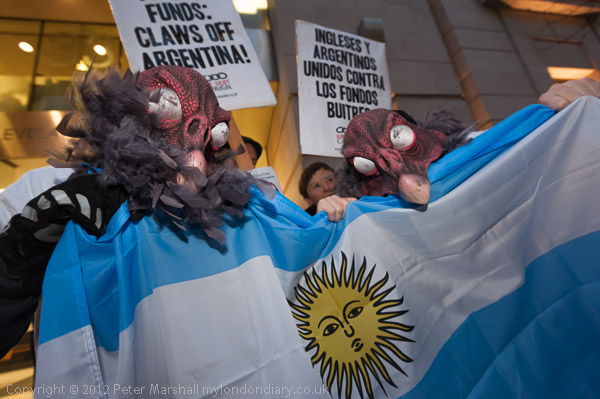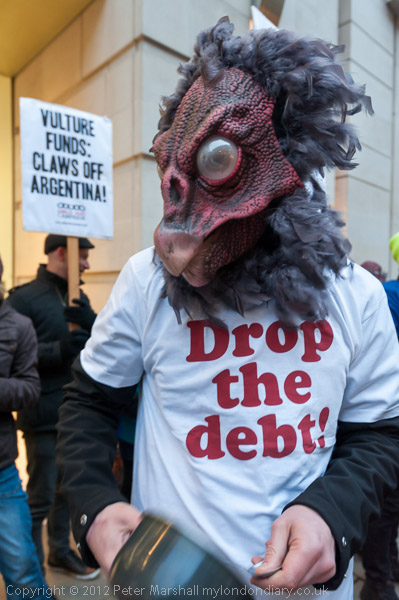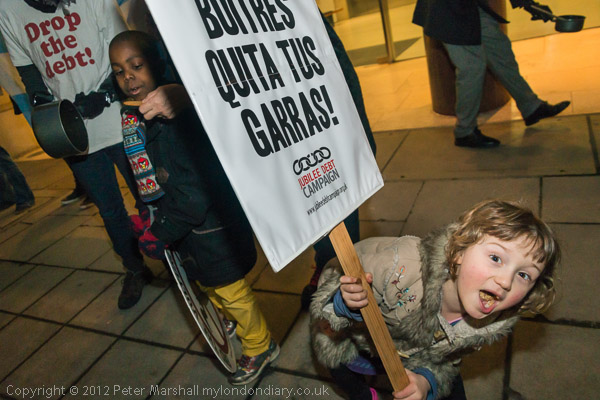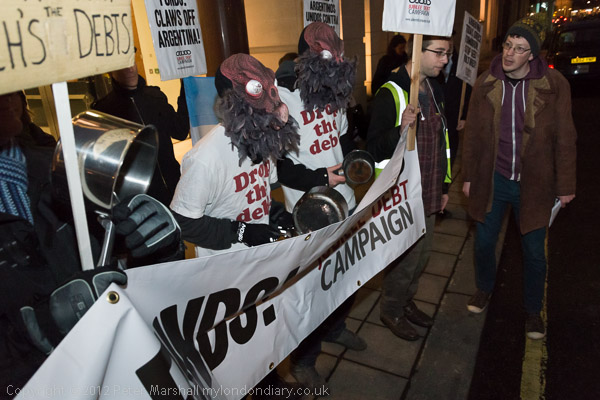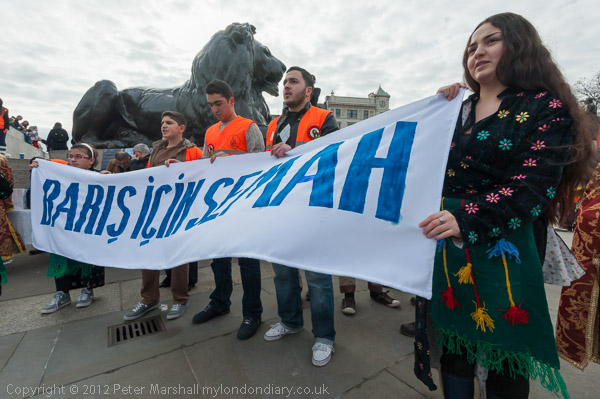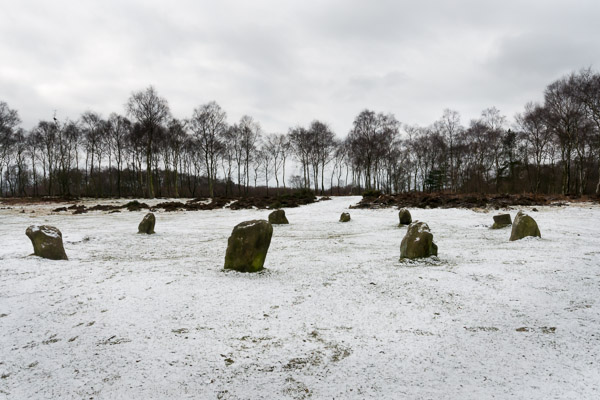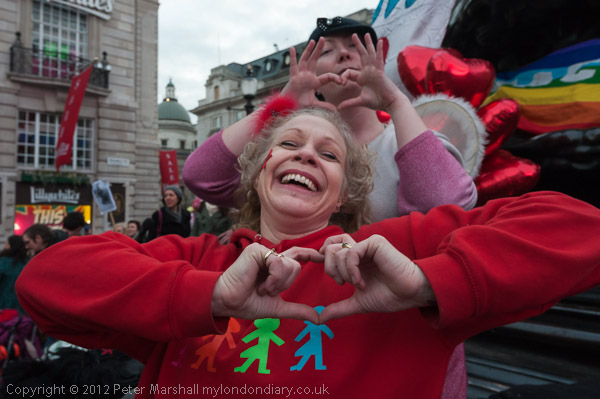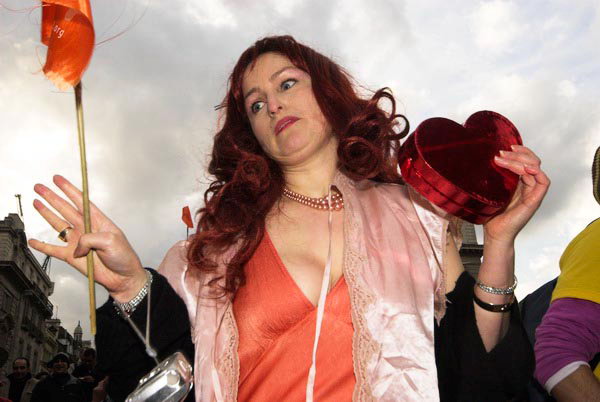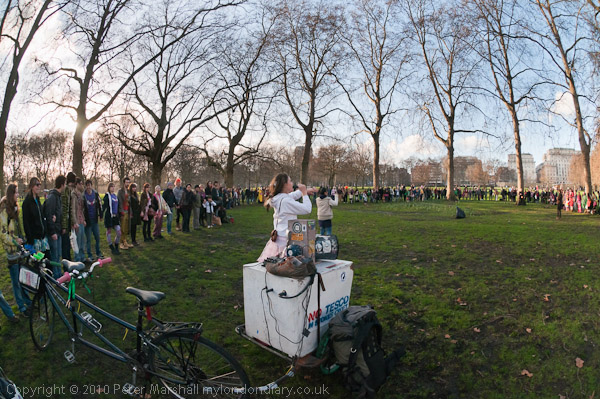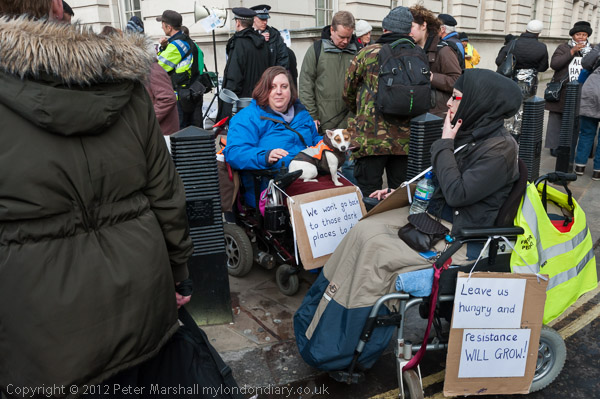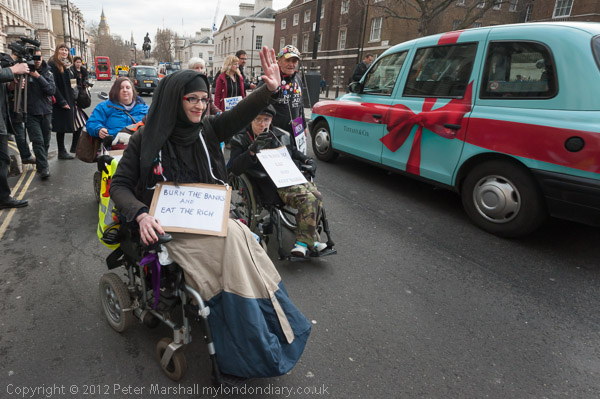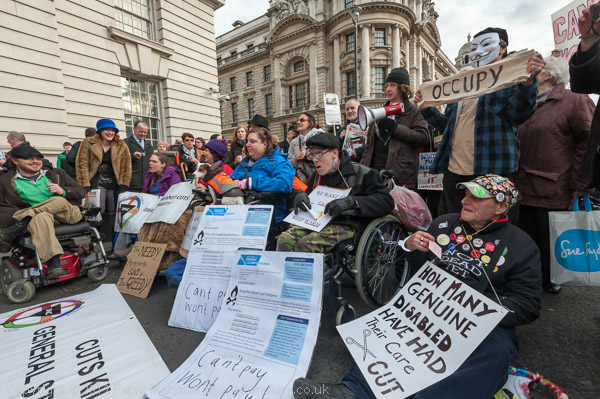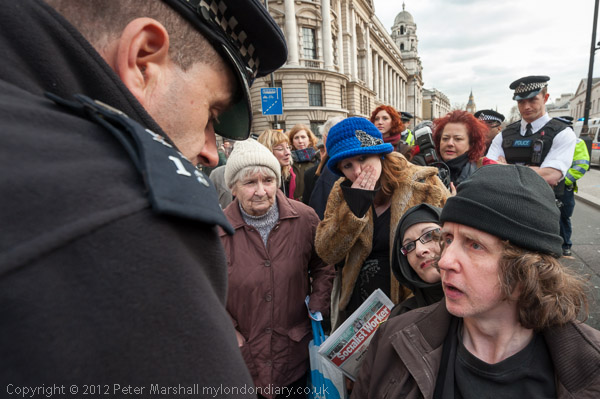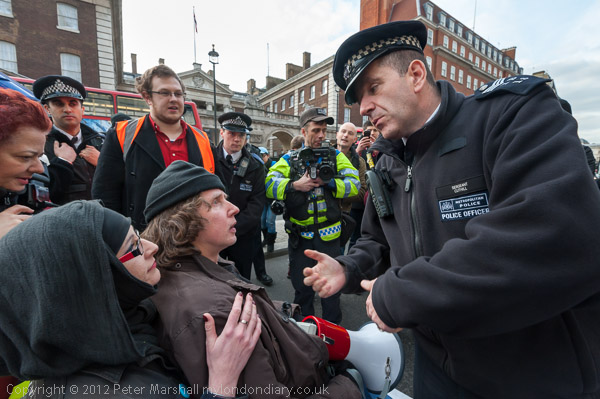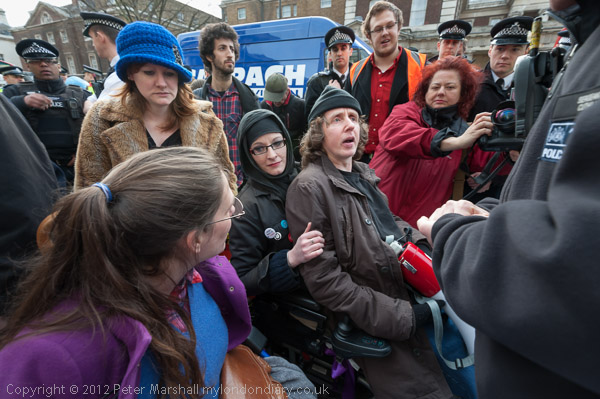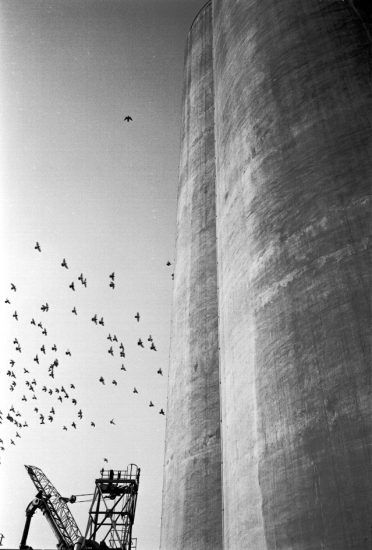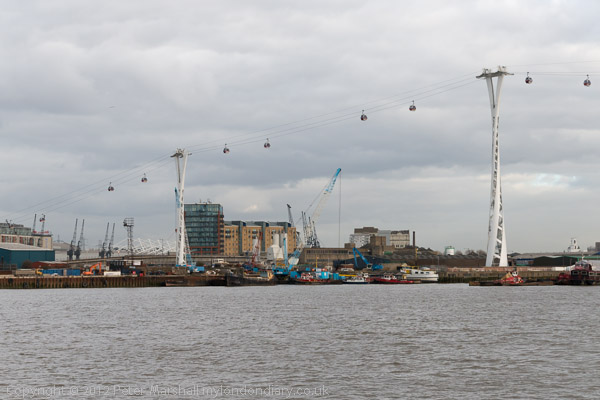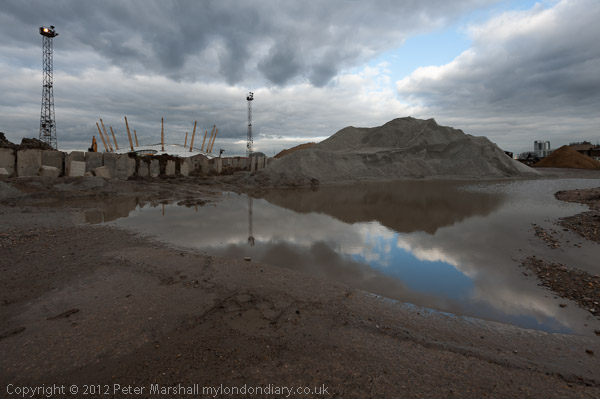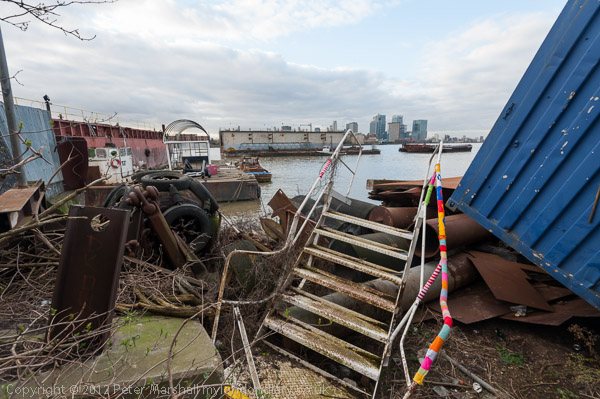There are some events I cover where I have little in common with those taking part, and the ‘Defend the Flag’ march organised by the ‘South East Alliance’ (SEA) was one of these. The SEA is a group that has emerged from various people who have become dissatisfied with the EDL, where there has been a considerable amount of falling out over the activities of a few of the leaders, particularly ‘Tommy Robinson’, particularly since some spectacular failures such as the march at Walthamstow last September. Many others in the various ‘patriotic’ or right-wing movements have long expressed dissatisfaction with the EDL for various reasons both personally to me and in the various right-wing forums on the web, and I’ve reported some of these when covering events on My London Diary.
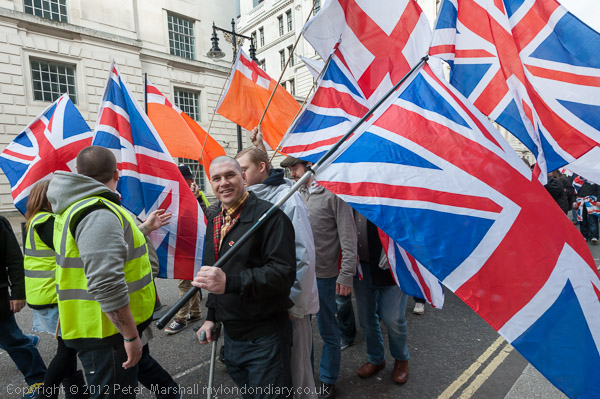
Union Flags and Unionist Flags on the march
I’ve always tried to cover events in a fair and unbiased way, to show clearly what happened at them, and to convey the views of those taking part. Partly because I think it the duty of a journalist, but also because I think it is the most effective way to expose extremist views for what they are. It doesn’t mean not making my own views clear, but I try to separate these from the accurate reporting.
At this march, I noticed that as well as those taking part from organisations linked to Northern Ireland, including men wearing the tie or badge of the Somme Association , there were also several wearing British National Party ties and badges. This isn’t something I’ve previously noted at recent right-wing marches (where dress has tended to be more informal) and I mentioned both in my account and the captions to photographs – as you can see in Defend the Union Flag on My London Diary.
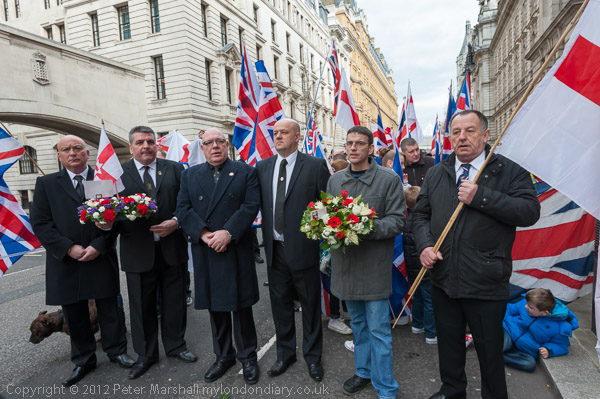
Members of ‘Friends of the Somme’, with at right a man wearing a BNP tie
This upset another of the BNP badge and tie wearers enough to make him complain to the agency that originally carried my pictures for the event. Of course there were no grounds for any complaint. If you protest on the streets you do so in the hope of getting publicity for the cause you are supporting and are encouraging people to report on your actions and publish photographs of them, and you can certainly have no expectation of privacy. If you don’t want people to know you are a member of the BNP then don’t wear the badge or tie.
Along with the other photographers I had been asked by one of the organisers to keep out of the actual march, and although I felt it was an unreasonable request I didn’t make an issue of it. There were just one or two pictures that I could only take from inside the march, and I went in briefly and did so without problems, but the rest of the time I worked from one or other side.
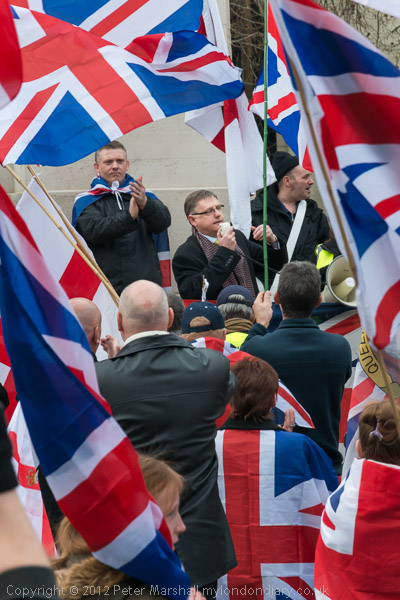
Jim Dowson, Britain First’s Northern Ireland organiser, who once headed
fund-raising for the BNP, speaking
To me the march and the rally which followed appeared to be a peaceful and reasonably well-ordered event. Unlike at some previous right-wing events I didn’t get abused, threatened or spat at by anyone, though there were a few personal comments but the worst thing I was called was a ‘commie photographer’ who worked for ‘Searchlight’.
I’m a socialist who has never belonged to any of various communist parties around and never worked for Searchlight, but don’t take being accused of either as an insult, just a symptom of the paranoia some on the extreme right suffer from. And if Searchlight would pay the agency they could use my work just as the Guardian, Sunday Times, Jewish Chronicle and other publications around the world have done. So far the only sale I’m aware of for any of my pictures from this not very newsworthy event has been in Brazil.
Later I learnt from other photographers that my impression of the march as peaceful was not entirely true. While I was photographing the front of the march opposite Parliament, just down Parliament St a hundred yards of so away, a small group of marchers threatened several photographers and attacked one of them.
It’s always a problem that you can’t be everywhere and can’t see or photograph everything, even at a relatively small event like this, with a little over a hundred people taking part. I hadn’t had an opportunity to talk to the other photographers about it as I’d rushed away shortly before the event was due to finish to another event. But once I knew I posted a correction to the story.
I’m unhappy with any group that tries to annex one of our national flags for its own purposes – whether in Northern Ireland or in the rest of the United Kingdom. It seems to me that a national flag should be something that unites a nation rather than divides it. It should be a national flag and not a tribal or factional one. And of course our national flag is the Union Flag. I was no fan of the Olympics, but it was good to see it being proudly carried by teams which reflected the great wealth of diversity in our country.
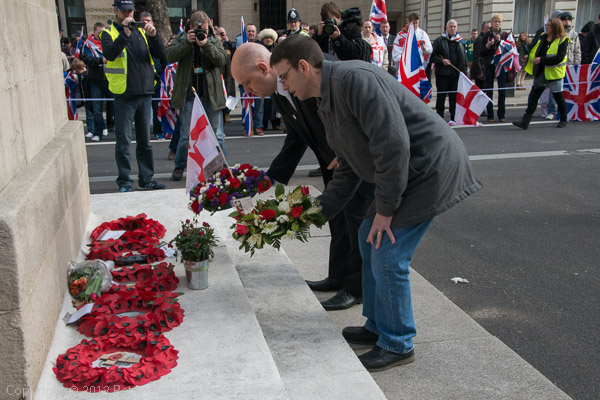
There was a certain irony too, when watching the solemn laying of wreaths by the representatives of the Somme Association at the Cenotaph commemorating the brave Ulster men who died fighting for their country to think that this monument, designed to commemorate the military dead of the First World War from all across the British Empire, was unveiled for a second time in 1946 to remember those who died in the war against fascism to know that among those watching in the march behind the barriers were those who belong or have belonged to fascist organisations.
________________________________________________________
My London Diary : Buildings of London : River Lea/Lee Valley : London’s Industrial Heritage
All photographs on this and my other sites, unless otherwise stated are by Peter Marshall and are available for reproduction or can be bought as prints.
To order prints or reproduce images
________________________________________________________
